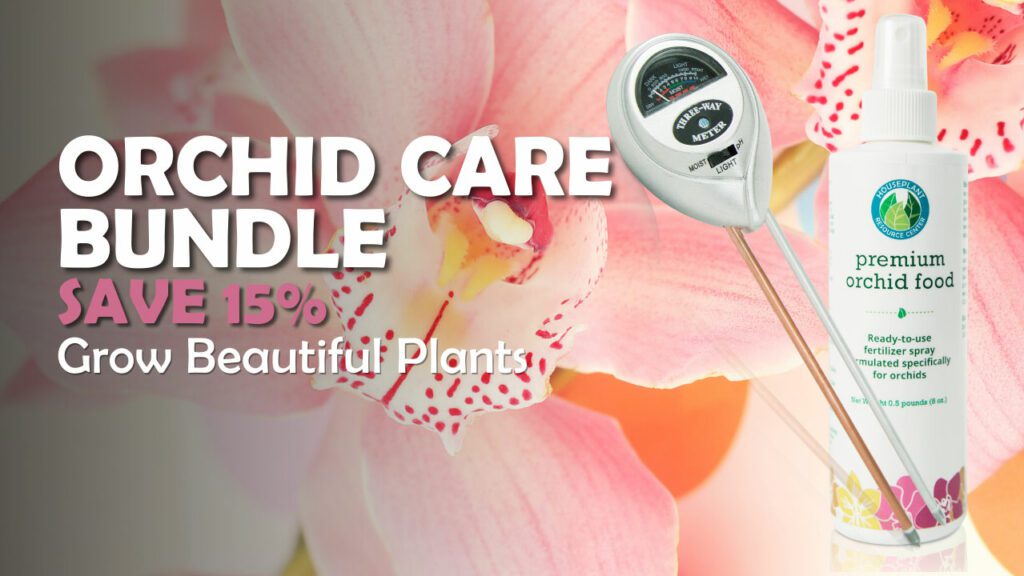Learn the 8 most common reasons why your orchid isn’t blooming, and discover how to encourage bloom with simple adjustments.
Does this sound familiar? It’s finally bloom season and your orchid should burst into a spectacular show of colorful flowers any day now. You’ve been diligent about caring for your orchid and monitoring your plant’s leaves and stems every few days. Now it’s time for your hard work to pay off.
But the days go by and your orchid is as bare as ever. Eventually, you’re left scratching your head and wondering: Why isn’t my orchid blooming?
It can be terribly frustrating and a bit disappointing to spend lots of time caring for your orchid just to watch it sprout buds that shrivel up and fall off—or never even bud at all.
If your orchid isn’t blooming, don’t panic. There are a few key reasons why your orchid isn’t bursting into bloom, and you can usually encourage your plant to flower by making some simple adjustments in your orchid care routine.
Below, you’ll find the top 8 reasons why your orchid isn’t blooming and professional tips on how to coax your plant into its best bloom season yet.
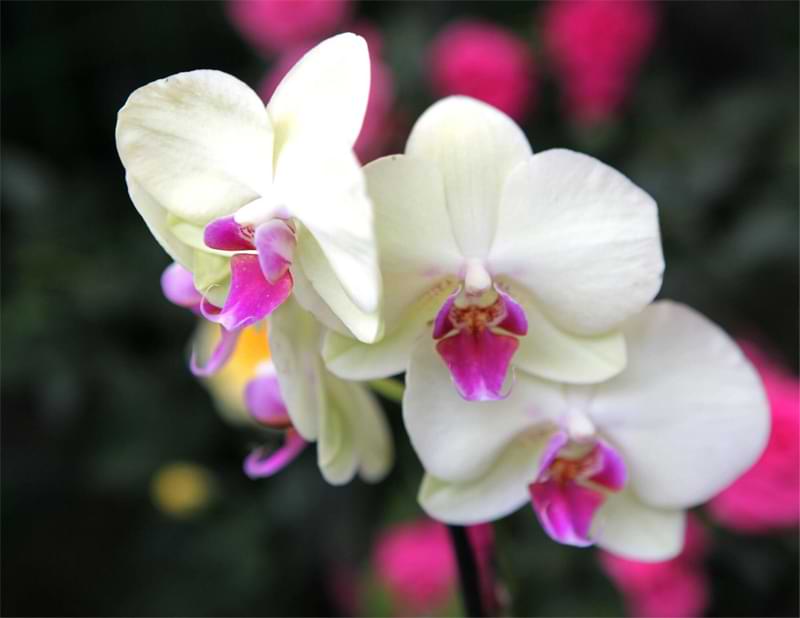
Reason #1: Your orchid isn’t getting enough light to bloom.
Inadequate light conditions may be the number-one reason orchids fail to bloom or rebloom. Most popular indoor orchid types, such as phalaenopsis, dendrobium, cattleya, and cymbidium orchids, require bright, indirect light to bloom.
Ideally, place your plant out of the path of direct rays, but make sure it’s in a sunny room. For many orchid plants, south- or east-facing windows are best.
Professional Tip: If your orchid is in a dim room with little natural light, such as an office or north-facing room, you may need a grow light to encourage healthy and consistent bloom.
Reason #2: Your orchid is exposed to direct sunlight.
Orchids are very sensitive to light conditions. In their natural habitat, orchids typically enjoy dappled sunshine, and they’re mostly protected by thick tropical canopies.
If your orchid is positioned in full, direct sunlight, you may notice sunburned or bleached leaves. This is a symptom that will likely prevent bloom since your orchid will spend its valuable resources on healing rather than budding.
Professional Tip: If your orchid is positioned in full sun, you can simply move it a few feet back from the window or hang a sheer curtain to filter direct sun rays.
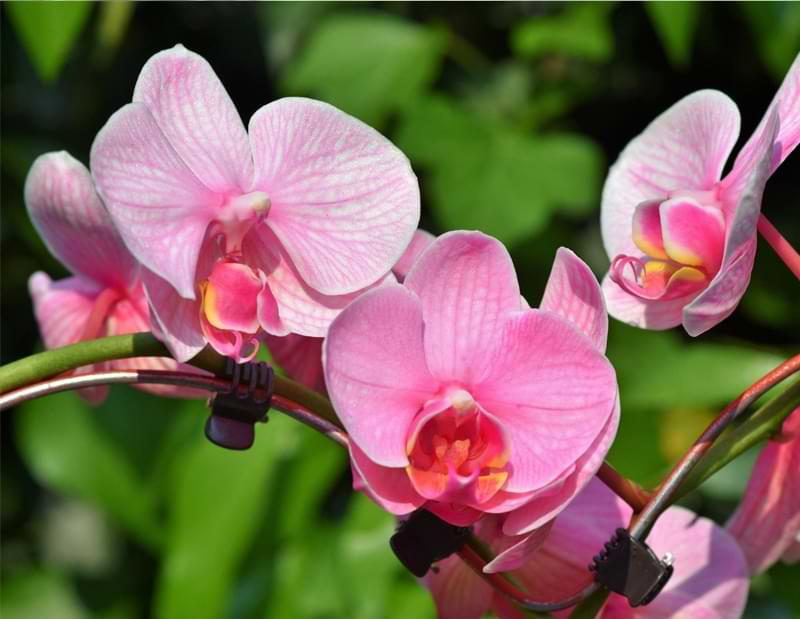
Reason #3: Your orchid needs varying temperatures to bloom.
Orchids produce big, long-lasting blooms when they’re able to engage in normal energy cycles. Typically, orchids produce energy in the form of carbohydrates during the day when temperatures are high, and rest at night when the temperatures typically drop.
If your orchid is getting adequate light and still isn’t blooming, try dropping the temperature a bit at night. The lower-temperature resting period is essential for triggering healthy, full blooms.
Professional Tip: If possible, expose your orchid to nighttime temperatures up to 10 degrees cooler than daytime temperatures. For best results, practice this for two weeks at the beginning of the orchid’s blooming season. Some people find it easiest to move the orchid to a basement or cool room overnight.
Reason #4: Your orchid has outgrown its pot.
When orchid growing mix breaks down, your orchid’s roots may not get proper ventilation. This can prevent bloom and affect the overall health of your orchid since epiphytes require air to survive and thrive.
Choosing when to repot your orchid can be tricky. Some plants may not bloom for six months to a year after repotting. And some orchids actually prefer to be root-bound and will bloom best when they’re tightly contained in their pots.
The best way to determine if your orchid needs a new pot is to evaluate its root system, as opposed to its foliage or stems. If your orchid’s roots appear brown, mushy, or densely packed, it’s time to give your orchid a new pot. Additionally, if some roots are protruding from the soil and growing over the pot’s edge, your orchid may need some more room to grow.
When you repot, you can divide your orchid plant to maintain blooming vigor and encourage additional growth.
Professional Tip: Choose an orchid pot that’s slightly bigger than the last. Giving your orchid too much room to grow suffocates its roots in growing mix and can be detrimental to its bloom cycle. For more tips on how to choose the best pot for your orchid, click here.
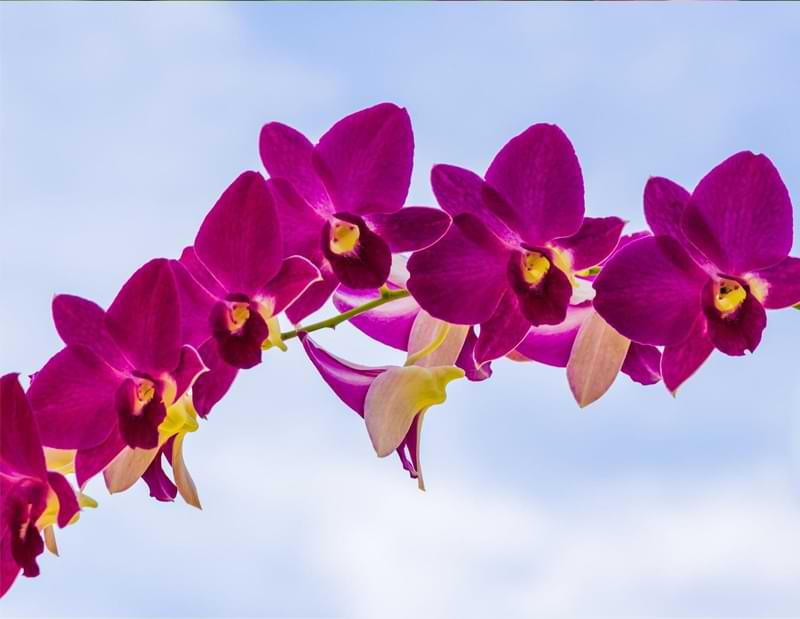
Reason #5: You’re over-watering your orchid.
If you’re over-watering your orchid, it will drop its buds and—what’s worse—it may be close to dying. You’ll want to avoid letting your orchid sit in wet growing mix since its delicate root systems are prone to root rot.
As a general orchid-watering rule, always err on the side of under-watering. Keeping an eye on the root system can pay dividends too. If your orchid’s roots are turning brown or appear mushy, you’re watering too much.
A good orchid potting mix is key to draining excess water and encouraging a healthy plant that’s ready to bloom. If the growing mix allows for excellent drainage, your orchid will be less likely to suffer from root rot.
Professional Tip: If you’re worried about root rot, try using a Root Supplement to strengthen your orchid’s roots so your plant will stay healthy and show big, beautiful blooms.
Reason #6: You’re under-watering your orchid.
Of course, there is such a thing as under-watering your orchid. Like all plants, orchids need access to water. If your plant is thirsty all the time, it won’t bloom. Orchids that become too dry will begin drawing water from developing buds in an attempt to self-preserve.
Remember, orchids are mostly tropical plants that enjoy jungle-like conditions. Even though their roots won’t hold up to over-watering, orchids love humid air and are subject to gentle rain showers in the wild.
Professional Tip: Be sure to place your orchid on a humidity tray so it can bask in the moisture-filled air even if you’ve skipped a watering.
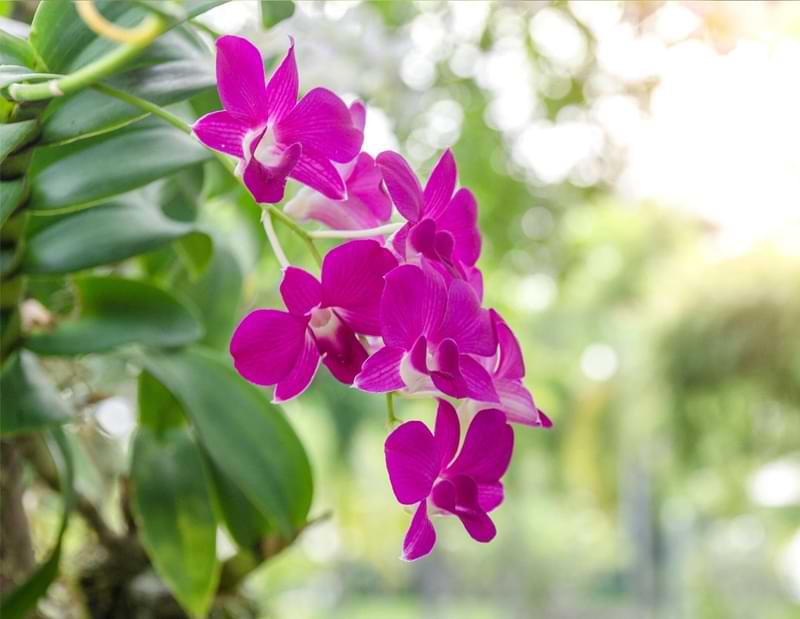
Reason #7: It isn’t your orchid’s blooming season yet.
Each orchid type has its own bloom cycle. Some orchids bloom in spring and summer, while others prefer to show their blooms in fall or even during the winter.
For example, vanda orchids bloom two to three times per year, and each bloom cycle can last up to six weeks. On the other hand, cattleya and cymbidium orchids only bloom once a year, but their stunning shapes make them popular choices for orchid growers.
Buying an orchid plant in bloom isn’t necessarily a good indicator of its blooming season. Growers and producers can easily induce bloom in greenhouses by manipulating light and temperature conditions.
Professional Tip: Make sure you know the bloom cycles of your particular orchid. A little research can save you months of wondering why your plant isn’t flowering. Here’s our nifty guide to indoor orchid types, so you can choose the perfect orchid for your garden.
Reason #8: Your orchid isn’t getting the right fertilizer.
Orchids aren’t heavy feeders. And their root systems are complex and delicate, unlike the root systems of other, more traditional houseplants.
But don’t forget that your orchid needs food and nourishment to bloom and thrive indoors. Regular fertilizers can be too harsh and burn your plant, so the best orchid fertilizer will be gentle and specially designed for your orchid.
Professional Tip: If you’re looking for the perfect orchid fertilizer, we recommend our easy-to-use Premium Orchid Food. We’ve diluted the standard orchid fertilizer ratio so you can safely fertilize your orchid at every watering without burning its roots. Our fertilizer spray is formulated to supply the correct nutrients to your orchids and requires no mixing or measuring. Just spray and watch those blooms explode!
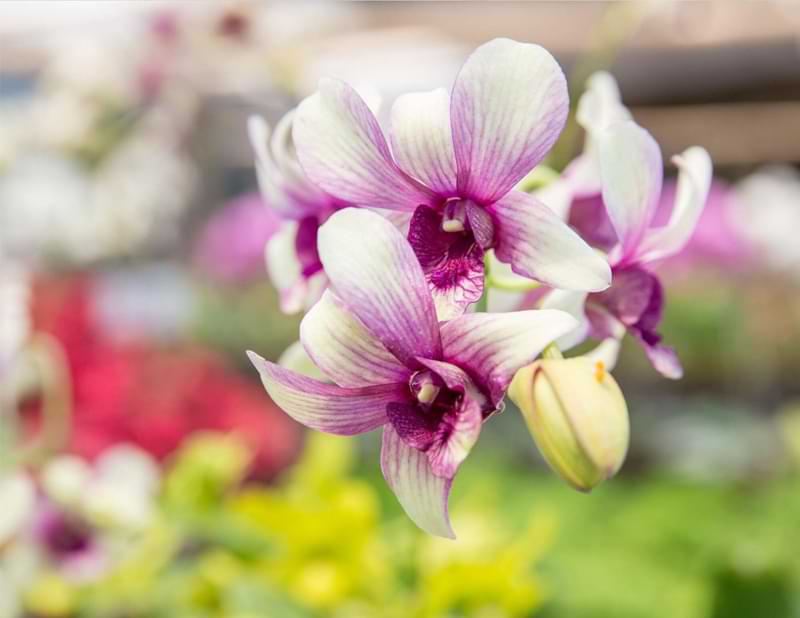
Make small adjustments and watch your orchid bloom.
When you’re troubleshooting with your orchid, it’s important to make adjustments in your care routine one at a time. Otherwise, you may not know what’s working and what’s not.
Always remember to keep your orchid in optimal light conditions and avoid over-watering.
As a wrap-up, remember the tools that will help you coax those iconic flowers into bloom this season:
- A grow light if your plant is in low-light conditions
- An orchid pot with good drainage
- The right orchid potting mix so your plant isn’t sitting in dense, water-retaining media
- A humidity tray for optimal humid conditions
- Houseplant Resource Center’s Root Supplement to prevent root rot
- Orchid Resource Center’s Premium Orchid Food to encourage bloom and nourish your orchid
To keep things simple, you might consider keeping a notebook with progress notes on your orchid’s health. This will help you make effective changes that’ll lead to a thriving orchid that you can count on to bloom year after year.


